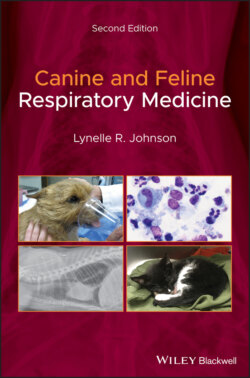Читать книгу Canine and Feline Respiratory Medicine - Lynelle Johnson R., Lynelle R. Johnson - Страница 45
Laryngoscopy
ОглавлениеLaryngoscopy can be performed as an isolated procedure or during the preliminary assessment of the airway before a transoral tracheal wash or bronchoscopy. An appropriate anesthetic protocol must be devised that provides a light plane of anesthesia and preserves laryngeal function. While multiple agents are appropriate for use, the key feature is to have spontaneous and vigorous respirations. An assistant is required to identify thoracic inspiratory efforts so that the examiner can insure coordination of laryngeal abduction with inspiration. If the plane of anesthesia is too deep, one to two boluses of doxapram (0.5–1.0 mg/kg) can be used to stimulate respirations (Miller et al. 2002). An accurate laryngeal examination is important because laryngeal dysfunction can be a contributing component to cough in up to 20% of dogs, even when signs of upper airway disease are lacking (Johnson 2016).
Figure 2.17 Necropsy image of the larynx showing the corniculate processes of the arytenoids (co), vocal folds (vf), cuneiform processes of the arytenoids (cu), saccules (s), and epiglottis (e).
Laryngoscopy includes the assessment of function as well as examination of all structures in the area of the rima glottis, including the soft palate, tonsils, laryngeal aditus, and saccules (Figure 2.17). The larynx is inspected for edema, hyperemia, or accumulation of secretions, any of which could indicate injury due to turbulent airflow, acid reflux, or lower airway inflammation. Eversion of laryngeal saccules is a common contributor to obstruction to airflow in the upper airways (see Chapter 4). Because they are membranous tissue, saccules are very responsive to manipulation and can become more swollen as the upper airway evaluation continues, so it is important not to over‐interpret this finding. In the normal dog, the soft palate should not overlap with the epiglottis by more than a few millimeters. Tonsils should be within their crypts; enlargement or eversion is suggestive of inflammation or irritation.
